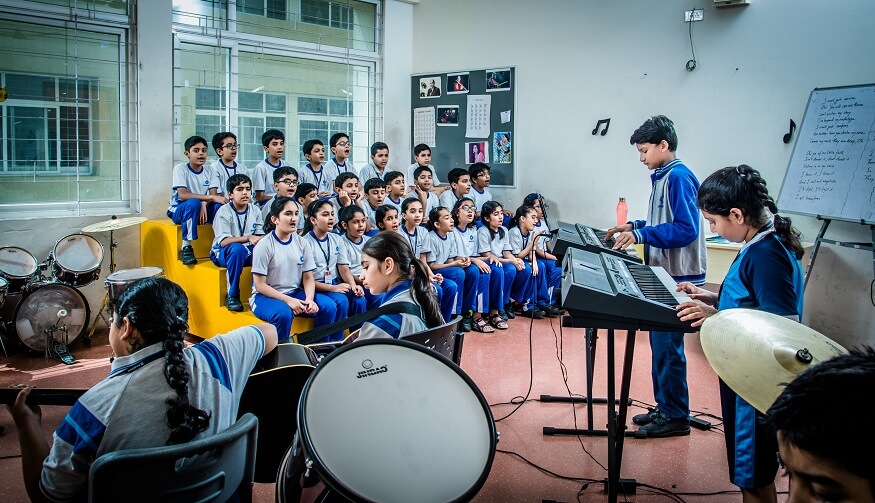School magazines are an important medium of communication at educational institutions. A good school magazine enables students to express themselves, showcase the talents of students and faculty, provide valuable information about school events and build a strong sense of community among students, faculty, and parents.
Creating a good school magazine requires meticulous planning, thoughtful strategizing, and skilful execution. In this blog, we will bring out the key elements that make a good school magazine and the right strategies for creating a good one.
Strategies for creating a good school magazine
Understand the purpose of the magazine
Pick the right team
Create a content plan
Gather content and design
Edit and proofread
Printing and distribution
Creating a good school magazine requires one to understand the purpose it serves. A good school magazine should achieve the three core objectives:
1) Showcase student talents and achievements: Highlight the achievements of students across different areas such as academics, sports, music, creative arts, etc.
2) Enable student creativity and self-expression: Encourage students to express their ideas, opinions and perspectives on a variety of topics.
3) Inform your readers about school events and news: A school magazine should serve as a platform of information for students, parents and faculty. It strengthens the community and keeps people informed about the happenings at school.
Understanding the purpose of a school magazine will help you determine the type of content, style, and tone of your magazine.
The success of a student’s magazine hinges upon the team involved. Consider the following factors when forming the school magazine team:
1) Seek out creative and passionate students: Look out for students who are enthusiastic about writing, designing and editing. They should possess good teamwork skills and be committed to meeting deadlines.
2) Engage faculty as mentors: Select a few staff members to join the team to guide the students. They can also ensure the content aligns with the school’s values and principles.
3) Foster productive conversations: Encourage the students to freely exchange ideas, brainstorm collectively, and collaborate to create a successful school magazine.
4) Provide essential resources: Grant students access to software and other necessary equipment to help them create content that is enjoyable, engaging, creative and inclusive.
Planning the content is an exciting time for students to showcase their talents and diverse storytelling skills. Ensure the following when creating a content plan:
1) Outline the sections and topics: Outline the different sections and topics that will be included in your magazine. You could consider including sections such as news and events, features, opinions, art, creative writing, culture, sports, and entertainment.
2) Find a theme: Choosing a theme or focusing on a specific topic in certain sections of the magazine helps in adding depth to the magazine. For example, it could be a theme focussed on sustainability, mental health, diversity and inclusion, Rights, etc.
3) Ensure a balance of content: Find a balance between highlighting academic achievements and highlighting extra-curricular activities. You could feature articles about academic projects, competitions and scholarships. At the same time, you could also have write-ups about the sports teams, music groups, drama groups, etc. Helping students feel recognized is an important aspect of a good school magazine. You could consider publishing an interview with the captain of the debate team, doing a photo story of the school’s top athletes or recognising the community service club activities, encouraging more students to get involved.
Following the content plan, it is time to gather content and design the magazine utilizing the talents of your team of writers, photographers, and editors.
1) Plan Ahead: Strive to gather content well in advance, ensuring an abundant selection to choose from when curating the school magazine.
2) Make it visually appealing: When designing the magazine, pay attention to the visual elements like layout, typography, and images. The design should be visually captivating, easy to navigate, and complement the magazine’s overall tone.
3) Integrate school branding and colours: Infuse the school’s branding and colours throughout the magazine to establish a consistent and professional aesthetic.
4) Select the right tools: A wide variety of publishing and design tools are available. Choose a tool that suits the team’s skill and budget. Adobe InDesign is a powerful tool that offers extensive design options, but it can be expensive and has a steep learning curve. On the other hand, Canva provides a more user-friendly and cost-effective option, but may not offer as many advanced features.
Editing and proofreading are critical components of creating any publication, including a school magazine. This can help to ensure that the magazine is of high quality and meets the standards of your school community
1) Ensure that you have a designated team of editors who are responsible for reviewing the content for accuracy, grammar, and style before it is published.
2) Proofread the final draft at least twice to ensure that spelling errors and typos are caught.
3) Establish the process: Set up a content submission and review process for the magazine. Define the roles and responsibilities, set deadlines, and keep time for receiving feedback promptly.
It is important to assign a designated editor or an editorial team who are responsible for reviewing and editing all content before it is published.
The final step in creating a school magazine is the printing and distribution process. If the allocated budget is tight, consider printing in black and white or creating a digital version of the magazine. Once printed, distribute your magazine through school events, and online platforms. Offer a school magazine subscription to parents and faculty. Encourage your readers to share the school magazine with their friends and family to help build its audience.
Enrol your child with EuroSchool today!










